A traditional Swedish Christmas
The Christmas tree, the decorations, Advent Stars and candle sticks, wrapping paper for the gifts and soon.. the tomte.
-
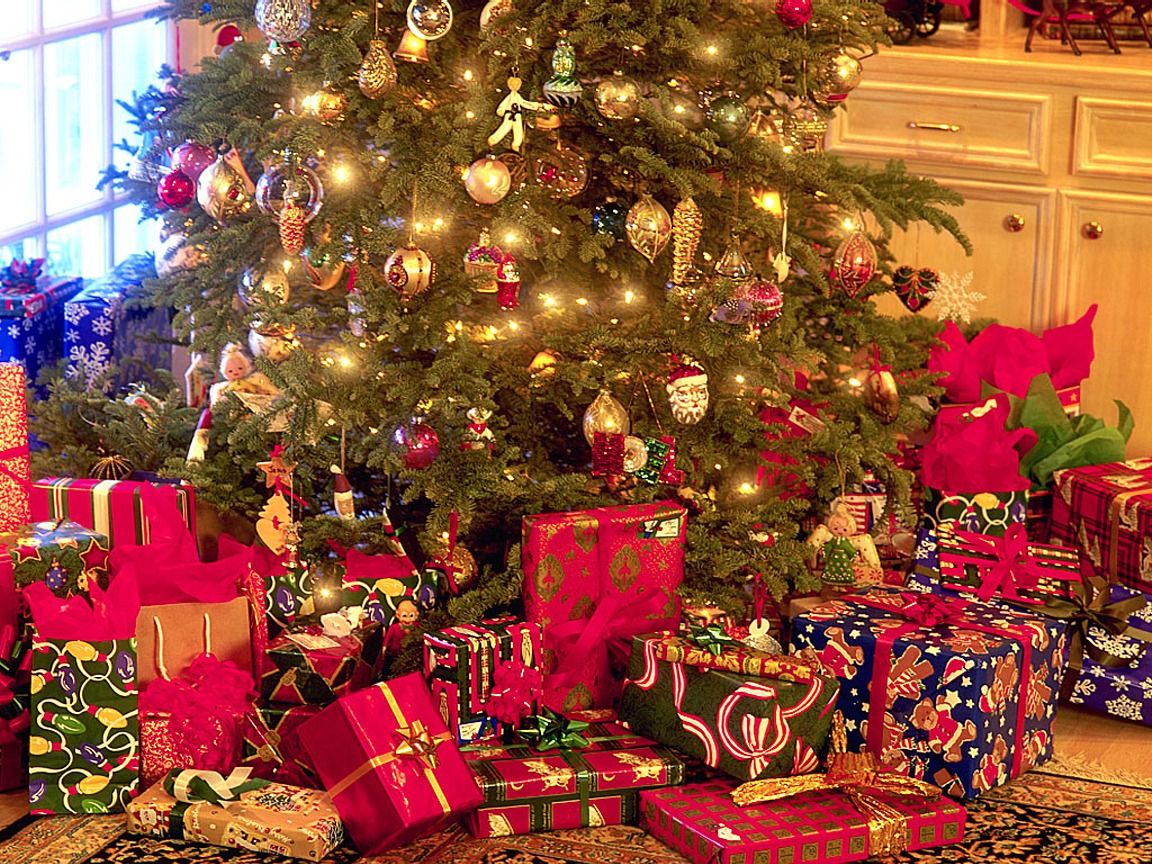 The Christmas tree The first trees may have been from the 15th century among mid-Europe merchants. The first documented Swedish Christmas tree is a tree from 1741. During the latter part of the 19th century, a tree could be seen at Christmas in many homes, not only among the rich.
The Christmas tree The first trees may have been from the 15th century among mid-Europe merchants. The first documented Swedish Christmas tree is a tree from 1741. During the latter part of the 19th century, a tree could be seen at Christmas in many homes, not only among the rich. -
-
Santa’s coming soon, have you decorated your tree? Swedes are conservative when it comes to the design of the Christmas tree.
“We have some new, cool and Oriental stuff but they don’t sell as much as the traditional stuff in red, white and green,” according to a design director at Ica Maxi.
“This year’s focus is on an entire army of wonderful ‘tomtar,’ they are a part of the traditional selection,” explains Anna Stensland, Åhlens’ design director. “When we first started selling Christmas ornaments this season, a few of the new and surprising objects work, but the closer we get to Christmas, the more big packs with red things sell. This year also brought the comeback of the classic ‘änglaspelet’ (Christmas angel chimes).”
In an article in daily DN, Maria Flinck, who has studied the phenomenon of Christmas decorations and written the book “Granna granen,” talks about trends with color and shapes. She explains there was a debate between 1910-1920 about Christmas aesthetics; people in general felt there was too much “junk” on the tree and felt more Swedish handicrafts made out of materials as straw and wood shavings were needed.
Fast forward to the 1950s and the Christmas decorations were traditional, and only in the 1960s did alternative colors pop up on the market.
Traditions in 21st century Swedish America: My Not-So-Swedish Family Christmas by Swedish American author Jessica Lidh
Looking for the right christmas food? See our food section or search under 'Traditions' for special Swedish Christmas sweets, see Swedish Christmas Treats "Gravlax" is a must, as are some other Swedish specialties Swedish Food; gravlax, herring.. As are of course, the omnipresent meatballs, regular: Swedish meatballs or, with a twist: Meatballs with apple and mustard -
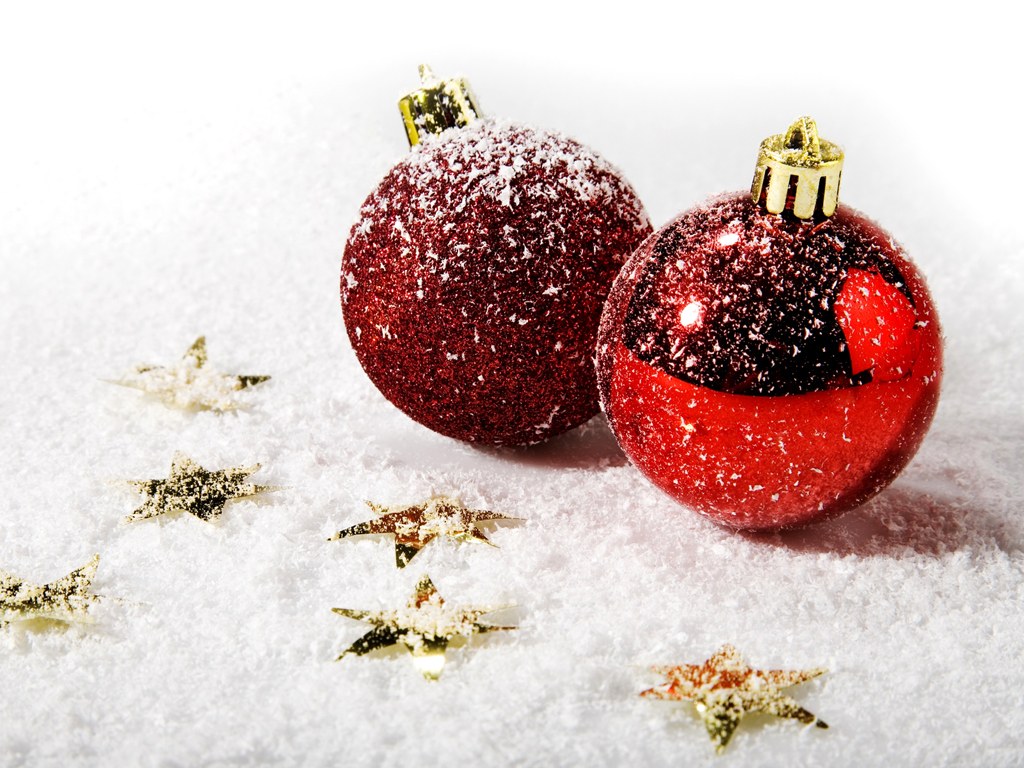 The Christmas tree decorations
The Christmas tree decorations -
-
But why is Christmas so red?
There’s no one answer to the question. Many historians believe that red was a difficult and expensive color in the past, and therefore associated with luxury and status. It is of course also a color that looks great with a green Christmas tree. Another important element with Christmas is tradition—we want things that have been on the tree since we were children, heirlooms that are supposed to release nostalgic memories. In yet another book, “Nu gör vi jul igen,” Institutet för språk och folkminnen (The Institute for Language and Folklore) has collected people’s stories about Christmas. Among decorations, the red Christmas baubles top the list of favorites while garlands with Swedish flags are on the bottom. The overly decorated tree (referred to as “American”) doesn’t have many supporters, even though sparkling Disney reindeer try their best to overtake the Swedish Santa. And Swedes are traditional even when it comes to the time for decorating the tree: Most Swedes decorate their tree the day before Christmas. However every third Swede puts their ornaments on a plastic tree, and according to a study by Hornbach, one in five Swedes has at some point cut down a tree in the woods illegally. -
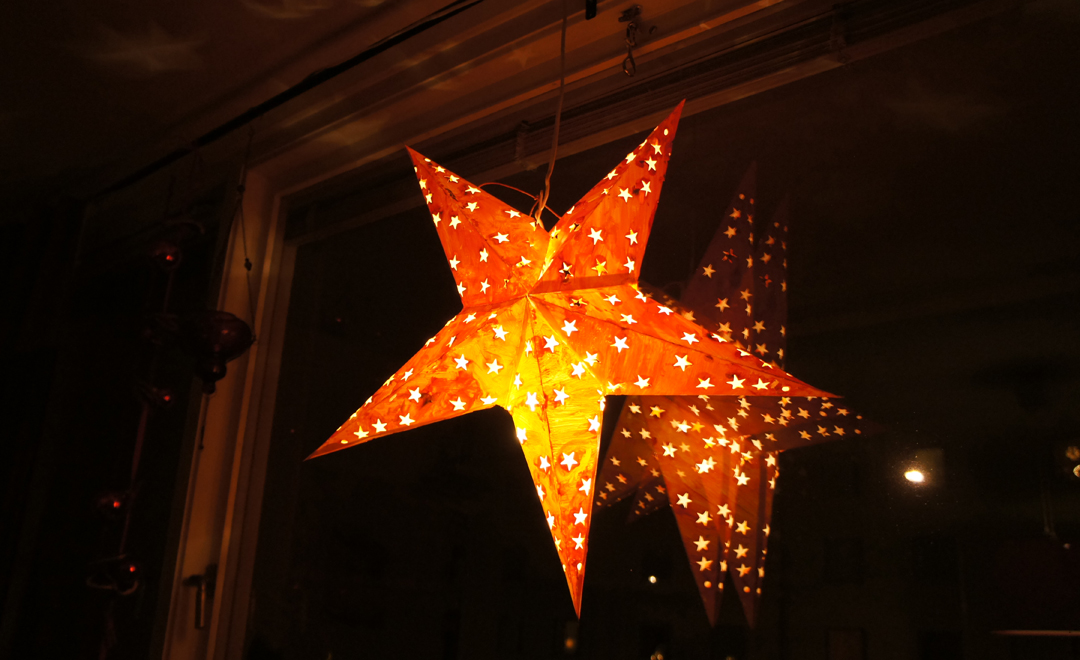 The Advent Star
The Advent Star -
The Christmas tree
The first trees may have been from the 15th century among mid-Europe merchants. The first documented Swedish Christmas tree is a tree from 1741. During the latter part of the 19th century, a tree could be seen at Christmas in many homes, not only among the rich. -
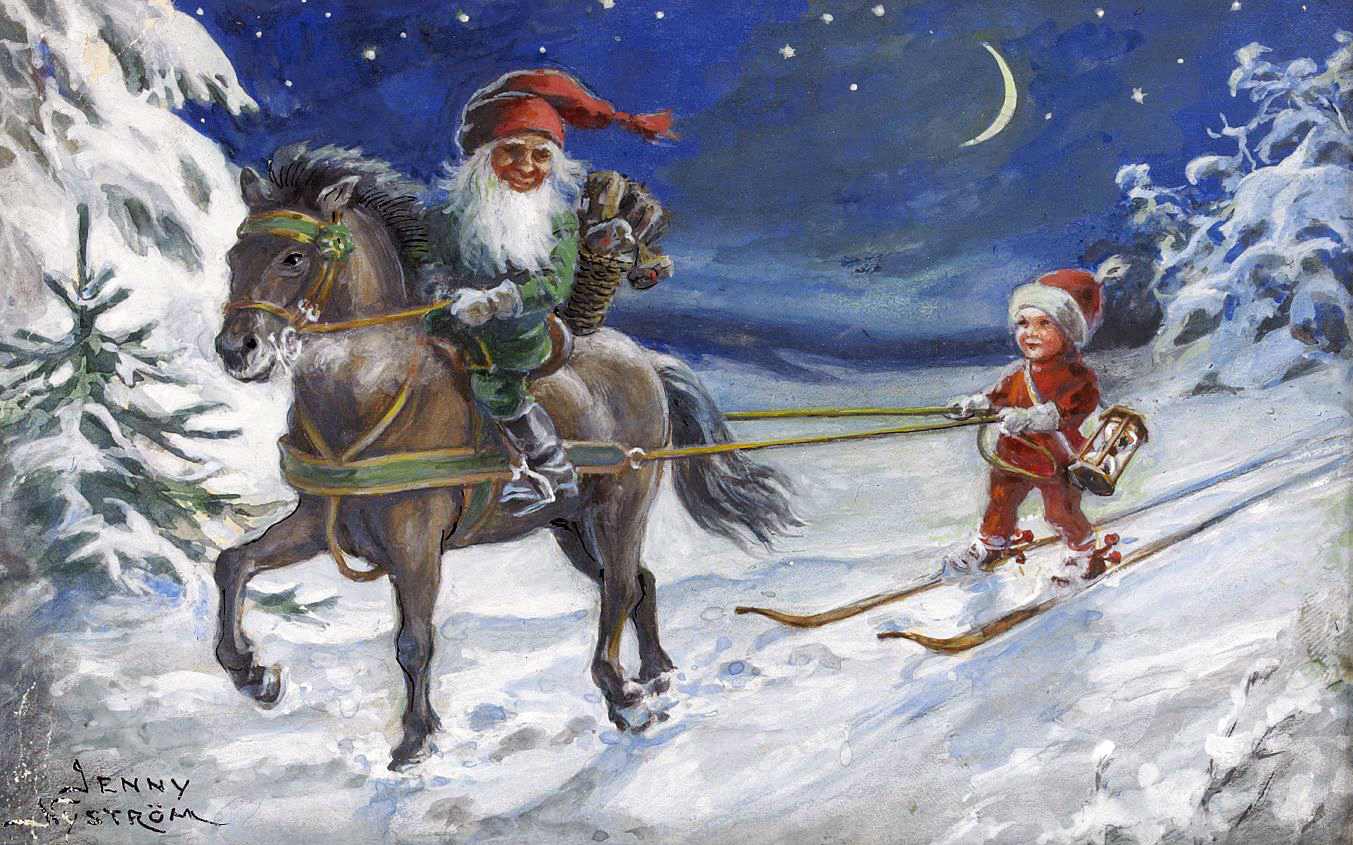 The Tomte
The Tomte -
The Christmas tree decorations
Christmas tree decorations were at first just fruit, cookies and candies. But by 1870, there were tips on how you could make your own decorations of paper, wood and fabric in illustrated journals. Most of it originated in Germany, from where mass-produced decorations came at the same time. -
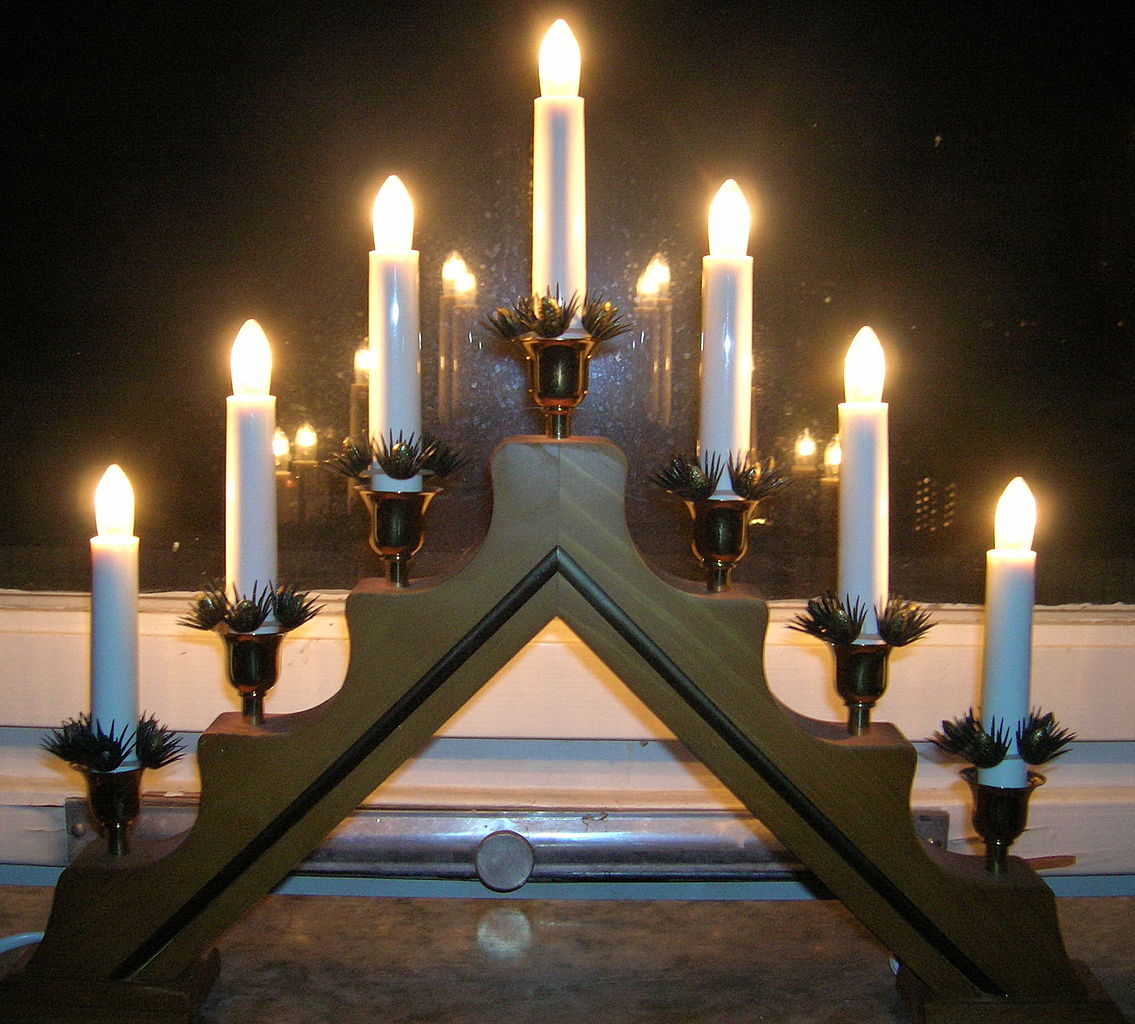 Advent candles are lit in many windows during Advent and Christmas.
Advent candles are lit in many windows during Advent and Christmas. -
The Advent Star
Founder of H&M, Erling Persson, had seen an imported electric Advent Star from Germany, and began producing a cheaper version in 1941, the orange star that soon became a household item. The name? “Tindra kristall.” -
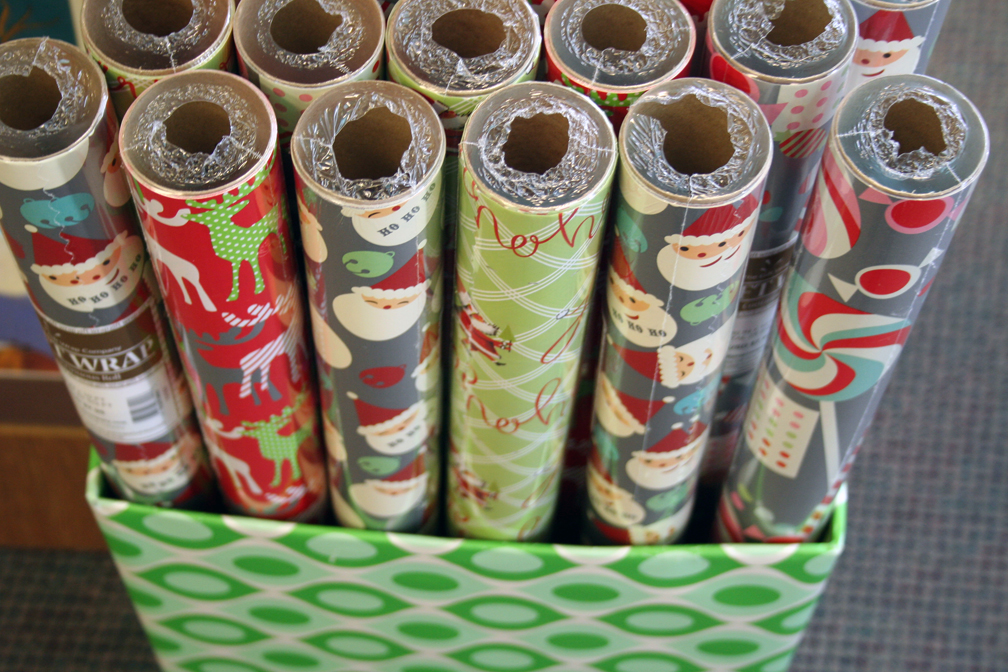 The first Christmas wrapping paper
The first Christmas wrapping paper -
The Tomte
The Swedish Santa is called Jultomte, and he has humble beginnings: He began as a grey watchdog, whom illustrator Jenny Nyström (1854-1946) turned into what we think of today as a Swedish tomte, although “tomte” has been much influenced by the Anglosaxian heavyset Santa. -
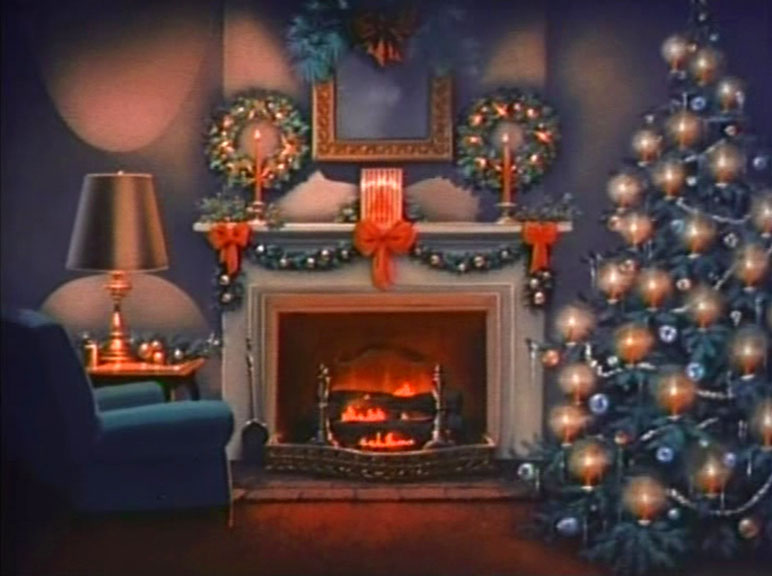 Kalle Anka—Donald Duck
Kalle Anka—Donald Duck -
The Advent Candle Stick
The electric one that can be seen in windows everywhere in Sweden is a Swedish invention by Oskar Andersson, employee at Philips. He recycled old Christmas lights by putting them into a regular candlestick. -
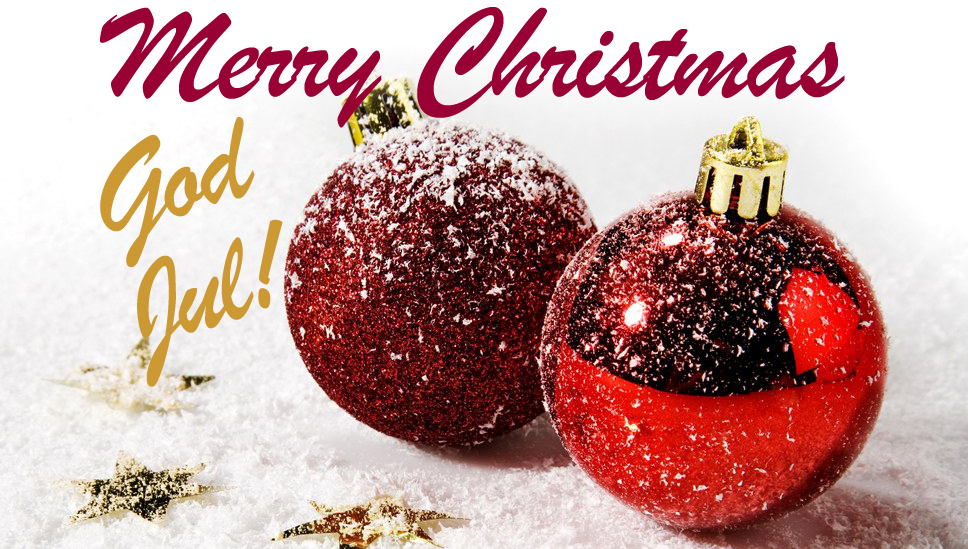
-
The first Christmas wrapping paper
The first Christmas wrapping paper was introduced in Sweden by Beda Hallberg, known as the founder and creator of Majblomman (the Mayflower pin) in 1922. -
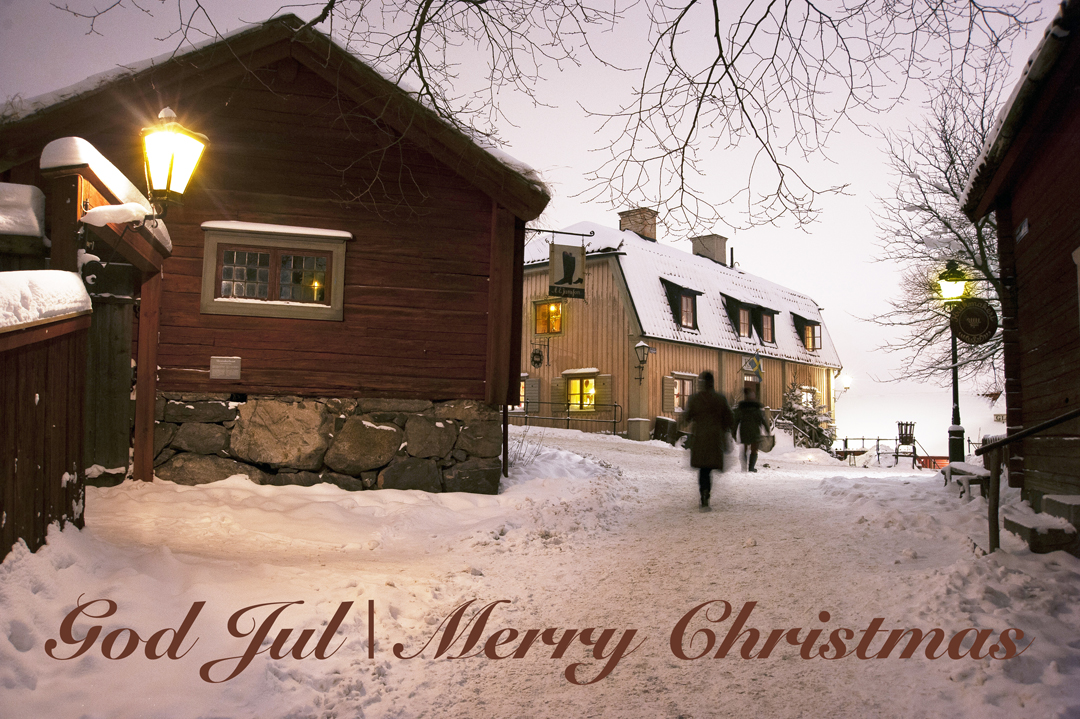 A couple of the 150 buildings that were moved to Skansen from all over Sweden in the late 1800s were photographed by Marie Andersson in 2012 (no, there’s no snow yet in Stockholm this year). This, the world’s oldest open-air museum is a popular destination throughout the holidays.
A couple of the 150 buildings that were moved to Skansen from all over Sweden in the late 1800s were photographed by Marie Andersson in 2012 (no, there’s no snow yet in Stockholm this year). This, the world’s oldest open-air museum is a popular destination throughout the holidays. -
Kalle Anka—Donald Duck
Disney's “Kalle Ankas jul” (“From All of Us to All of You”) was seen on Swedish television for the first time in 1960 and quickly became a tradition in many families. -
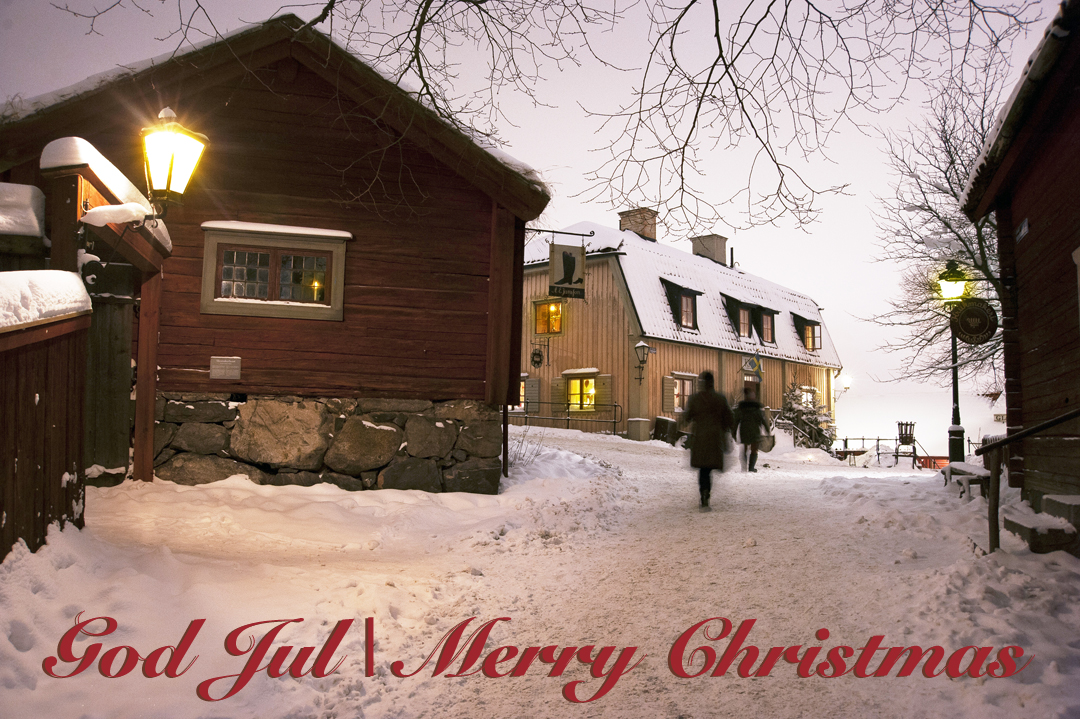 A couple of the 150 buildings that were moved to Skansen from all over Sweden in the late 1800s were photographed by Marie Andersson in 2012 (no, there’s no snow yet in Stockholm this year). This, the world’s oldest open-air museum is a popular destination throughout the holidays.
A couple of the 150 buildings that were moved to Skansen from all over Sweden in the late 1800s were photographed by Marie Andersson in 2012 (no, there’s no snow yet in Stockholm this year). This, the world’s oldest open-air museum is a popular destination throughout the holidays. -
-
